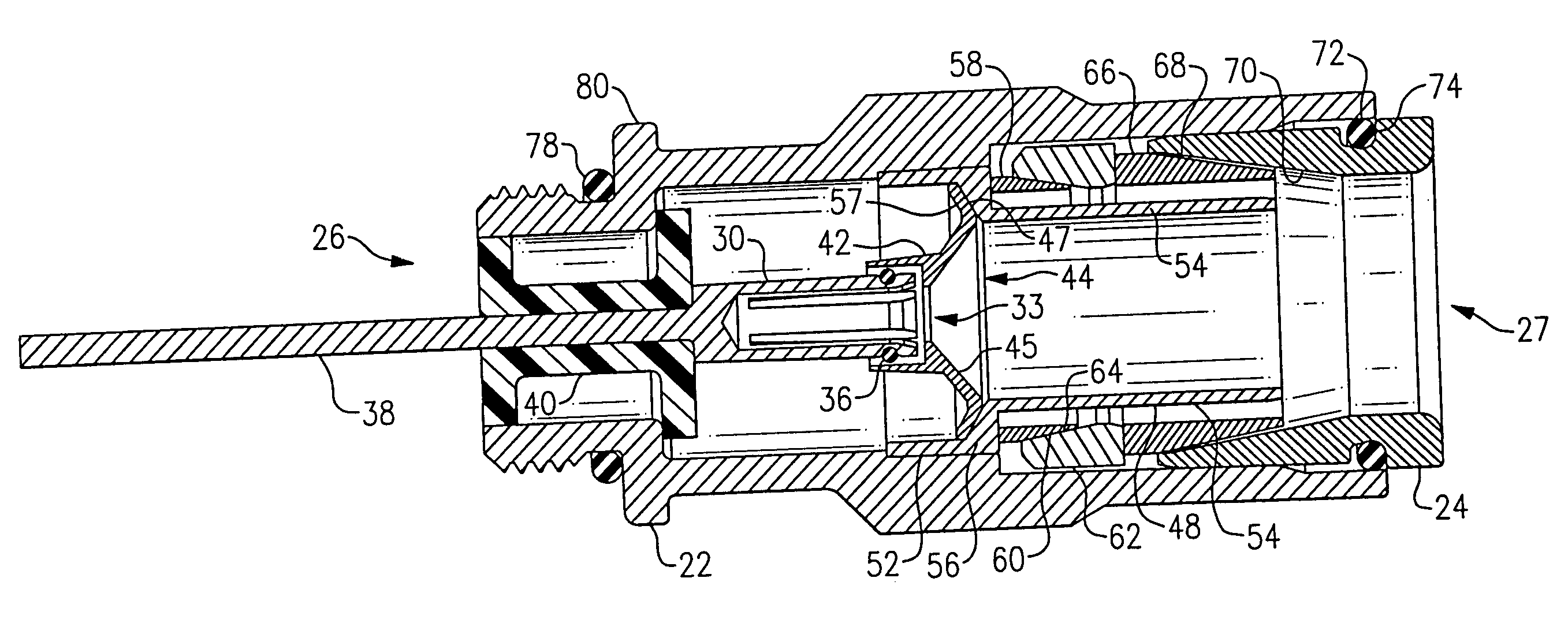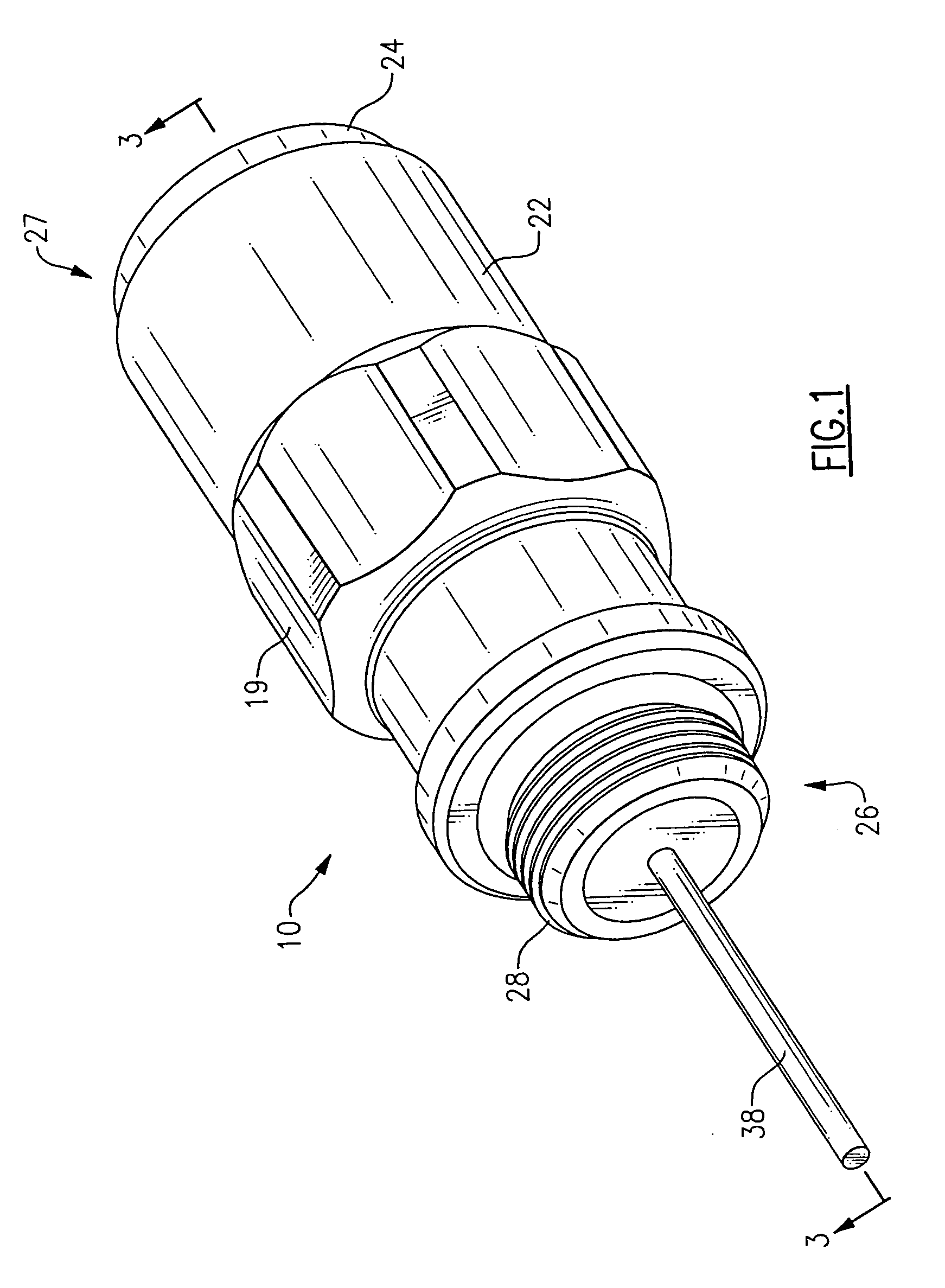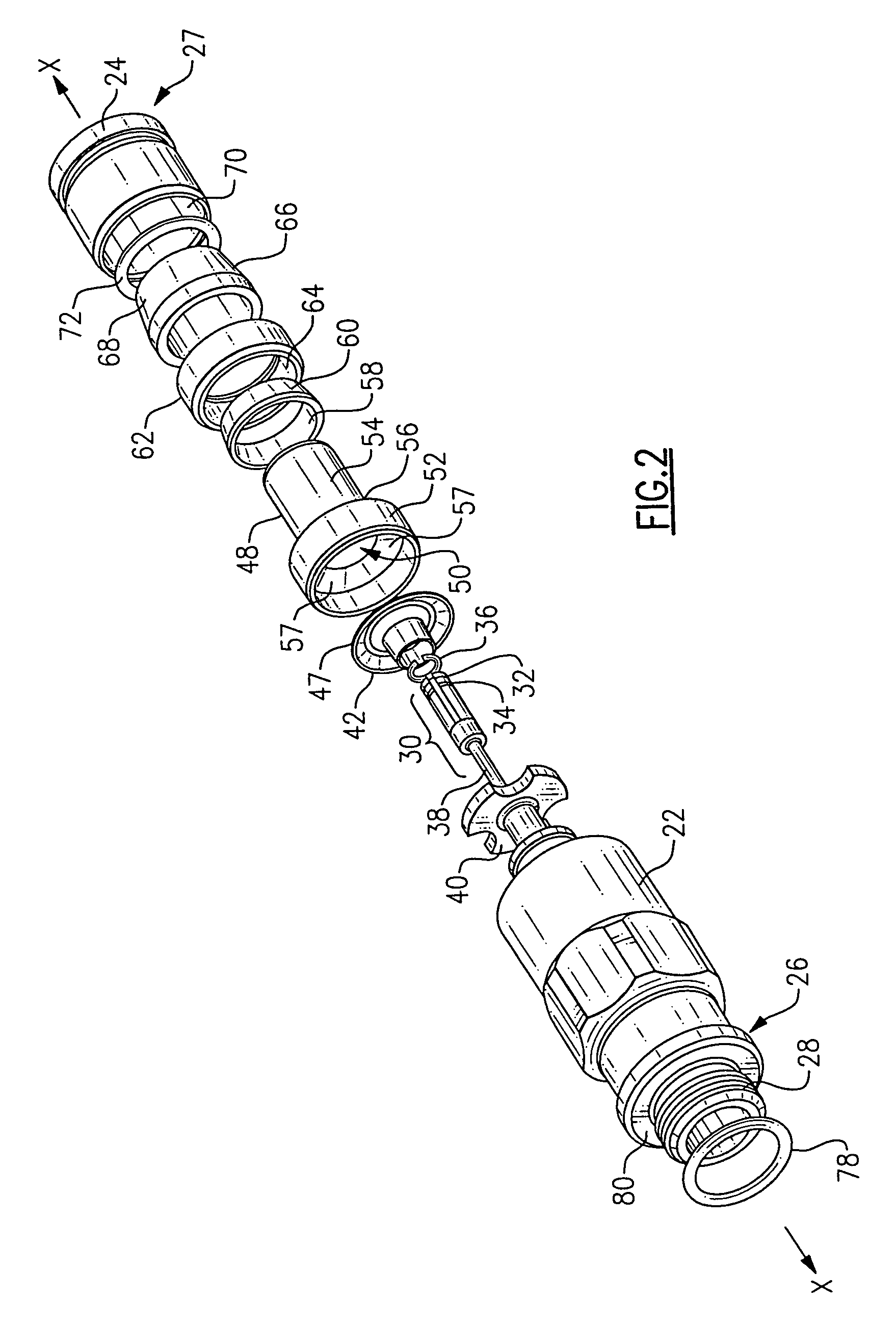Apparatus for making permanent hardline connection
a technology of hardline connection and apparatus, which is applied in the direction of coupling device connection, coupling device base/case, two-part coupling device, etc., can solve the problem of not being able to prevent radiation leakage as effectively, adding to the difficulty of properly interconnecting the cable, and making the job of technicians using threaded connectors even more difficul
- Summary
- Abstract
- Description
- Claims
- Application Information
AI Technical Summary
Benefits of technology
Problems solved by technology
Method used
Image
Examples
first embodiment
[0036]Referring now to the drawings, wherein like reference numerals refer to like parts throughout, and especially to FIGS. 1 and 5C, a connector 10 interconnects a hard-line coaxial cable 12 to an equipment port 14. Hard-line coaxial cable 12 generally includes a central conductor 16 for carrying a signal, such as a CATV signal, a layer of dielectric material 18 covering central conductor 16, and an outer conductive member 20 composed of conventional hard-line material spaced from central conductor 16 by dielectric 18. A jacket 21 may coat outer conductor 20 to protect it from the weather. Equipment port 14 may be any conventional type of port in which signal processing / conditioning equipment is stored and to which hard-line cables are traditionally interconnected, such as, for example, a tap, amplifier, filter, trap, or the like. Hard-line coaxial cables are typically used as transmission lines in a CATV system, or the like.
[0037]Connector 10 includes a connector body 22 preferab...
second embodiment
[0045]Referring to FIG. 6, the present invention is shown as a pin connector 100 used in connection with QR cable. Pin connector 100 is functionally equivalent to connector 10, and includes many of the same components as used with connector 10, all of which are referenced by identical reference numerals, while those components that are modified are given new reference numerals. When using standard QR type cable, most of the cable jacket is left on the cable, with only a little of the jacket being cut back during installation. Only RF seal 58 makes electrical contact with the ground braid of the QR cable, with subsequent electrical contact being made through RF seal driver 62 and connector body 22. In this embodiment, clamping / sealing member 66 only contacts the outer sheath of the QR cable.
[0046]Pin connector 100, extending along a longitudinal axis X, includes a connector body 102 and a press fit compression body 104 that axially slides relative to connector body 102 between first ...
third embodiment
[0048]Referring to FIG., the invention is shown as a pin connector in the closed position. A connector 130 includes a front body 132 and a back body 134. A conductive pin 136 is held within front body 132 by an insulator 137. Conductive pin 136 is electrically connected to a contact 138 which in turn is electrically connected to a collet 140. Preferably, conductive pin 136, contact 138, and collet 140 are one-piece. A plurality of teeth 142 are on an inner surface of collet 140 to provide an enhanced interference fit with the center conductor of the cable upon installation. For ease of manufacturing, teeth 142 are preferably formed as in internal threaded portion of collet 140. Portions of a mandrel 144 fit inside both front body 132 and back body 134. The portion of mandrel 144 inside front body 132 is preferably press fit inside front body 132. Mandrel 144 is preferably plastic. Mandrel 144 includes a seizing portion 146 which presses teeth 142 onto the central conductor of the ca...
PUM
 Login to View More
Login to View More Abstract
Description
Claims
Application Information
 Login to View More
Login to View More - R&D
- Intellectual Property
- Life Sciences
- Materials
- Tech Scout
- Unparalleled Data Quality
- Higher Quality Content
- 60% Fewer Hallucinations
Browse by: Latest US Patents, China's latest patents, Technical Efficacy Thesaurus, Application Domain, Technology Topic, Popular Technical Reports.
© 2025 PatSnap. All rights reserved.Legal|Privacy policy|Modern Slavery Act Transparency Statement|Sitemap|About US| Contact US: help@patsnap.com



